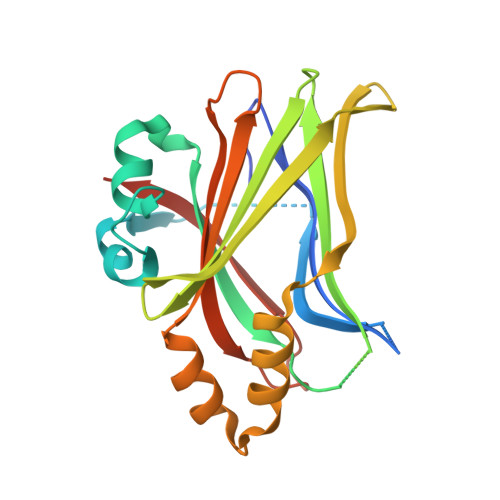Discovery of a cryptic site at the interface 2 of TEAD - Towards a new family of YAP/TAZ-TEAD inhibitors.
Sturbaut, M., Bailly, F., Coevoet, M., Sileo, P., Pugniere, M., Liberelle, M., Magnez, R., Thuru, X., Chartier-Harlin, M.C., Melnyk, P., Gelin, M., Allemand, F., Guichou, J.F., Cotelle, P.(2021) Eur J Med Chem 226: 113835-113835
- PubMed: 34509860
- DOI: https://doi.org/10.1016/j.ejmech.2021.113835
- Primary Citation of Related Structures:
6S60, 6S64, 6S66, 6S69, 6S6J - PubMed Abstract:
The Hippo pathway is involved in organ size control and tissue homeostasis by regulating cell growth, proliferation and apoptosis. It controls the phosphorylation of the transcription co-activator YAP (Yes associated protein) and TAZ (Transcriptional coactivator with PDZ-binding motif) in order to control their nuclear import and their interaction with TEAD (Transcriptional Enhanced Associated Domain). YAP, TAZ and TEADs are dysregulated in several cancers making YAP/TAZ-TEAD interaction a new emerging anti-cancer target. We report the synthesis of a set of trisubstituted pyrazoles which bind to hTEAD2 at the interface 2 revealing for the first time a cryptic pocket created by the movement of the phenol ring of Y382. Compound 6 disrupts YAP/TAZ-TEAD interaction in HEK293T cells and inhibits TEAD target genes and cell proliferation in MDA-MB-231 cells. Compound 6 is therefore the first inhibitor of YAP/TAZ-TEAD targeting interface 2. This molecule could serve with other pan-TEAD inhibitors such as interface 3 ligands, for the delineation of the relative importance of VGLL vs YAP/TAZ in a given cellular model.
Organizational Affiliation:
Univ Lille, INSERM, CHU Lille, UMR-S 1172, Lille Neuroscience and Cognition Research Center, F-59000, Lille, France.
















